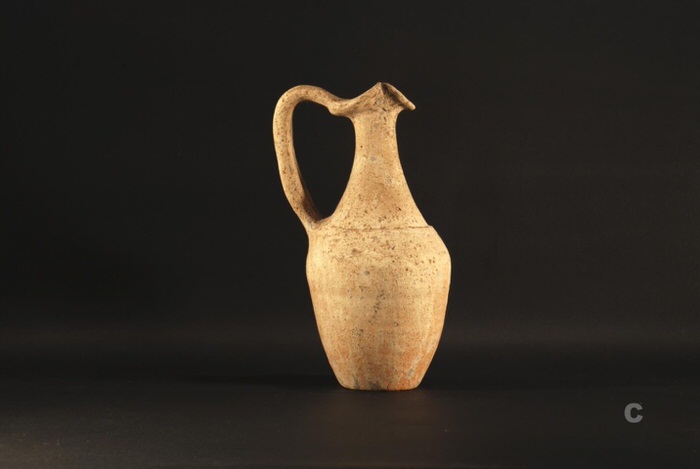Jug with a bi-lobate lip
The jug with the bi-lobate lip was found inside tomb 11 AR of the Phoenician-Punic necropolis of Sulky and belongs to some grave goods which date from the first half of the fifth century B.C. It consists of a ceramic jug with a red englobe and with the characteristic decoration of grouped horizontal lines (fig. 1).

This type of jug is part of a ritual kit which was widespread in the Phoenician-Punic necropolis in Sulky (fig. 2).

It is also called bi-conical jug because of the typical conformation of the body with two opposing truncated cones (fig. 3) and with a false double spouted handle (as the double spouted handle is attributable to older jugs than our sample, fig. 4).

What was this type of jug used for? It was the container for the wine which was drunk in honour of the deceased, probably according to the rite of Marzeah, the eastern ritual feast in which wine was a very important element, able to give a closeness to divinities, and whose roots in the culture of the Near East are extremely ancient and linked to the cult of heroes and kings.

Bibliografia
- P. BARTOLONI, La tomba 2AR della necropoli di Sulcis = Rivista di Studi Fenici vol. XV, 1, Roma 1987, pp. 57-73.
- P. BARTOLONI, Il museo archeologico comunale “F. Barreca” di Sant’Antioco, Sassari 2007.
- P. BERNARDINI, I roghi del passaggio, le camere del silenzio: aspetti rituali e ideologici del mondo funerario fenicio e punico di Sardegna in Actas del III Seminario Internacional sobre Temas Fenicios (Guardamar del Segura, 3-5 de mayo 2002), Alicante 2004, pp. 131-169.
- S. MUSCUSO, Il Museo “F. Barreca” di Sant’Antioco: le tipologie vascolari della necropoli di Sulky = Sardinia Corsica et Baleares Antiquae VI, 2008, pp. 9-39.

 VR
VR